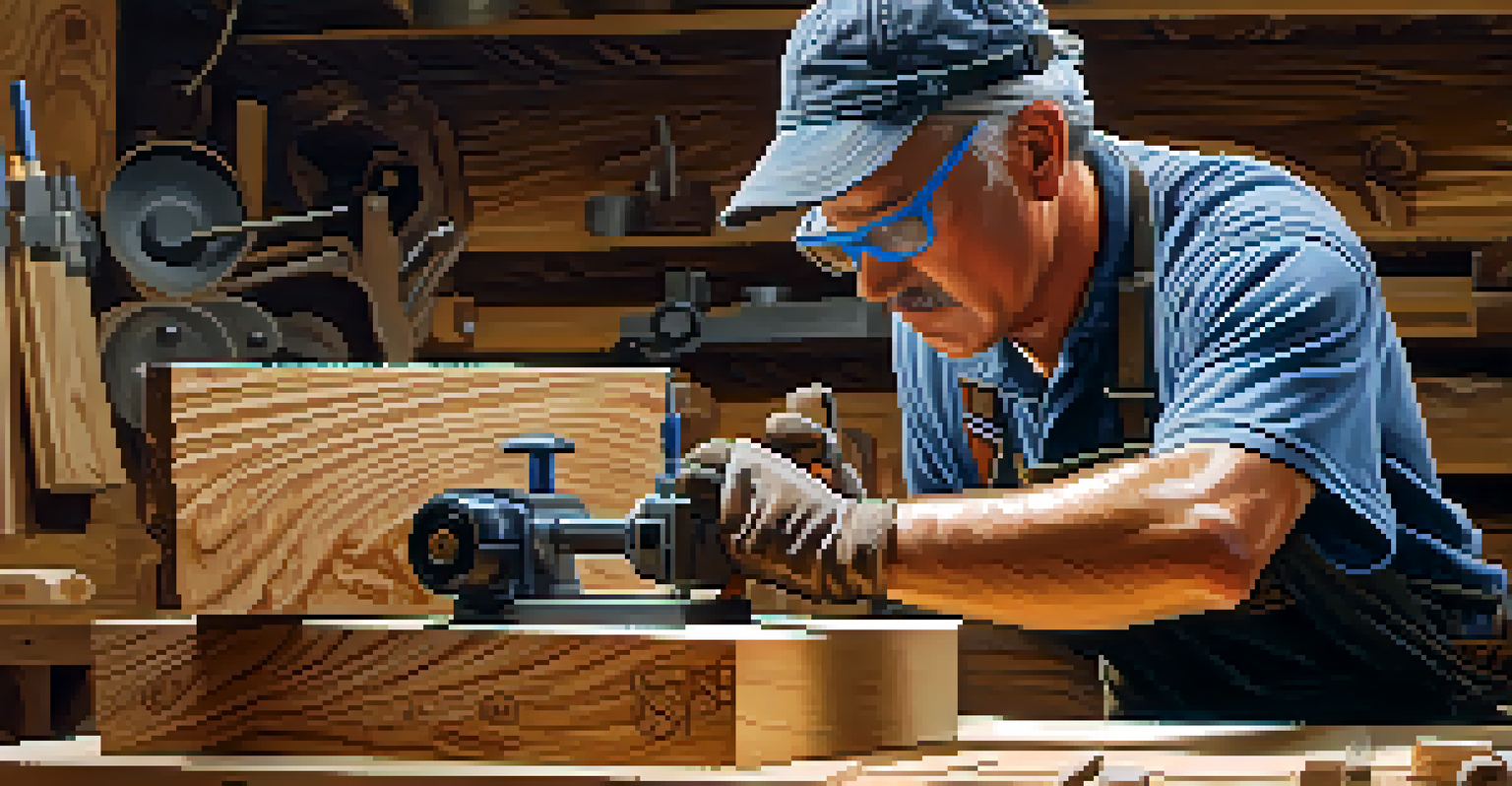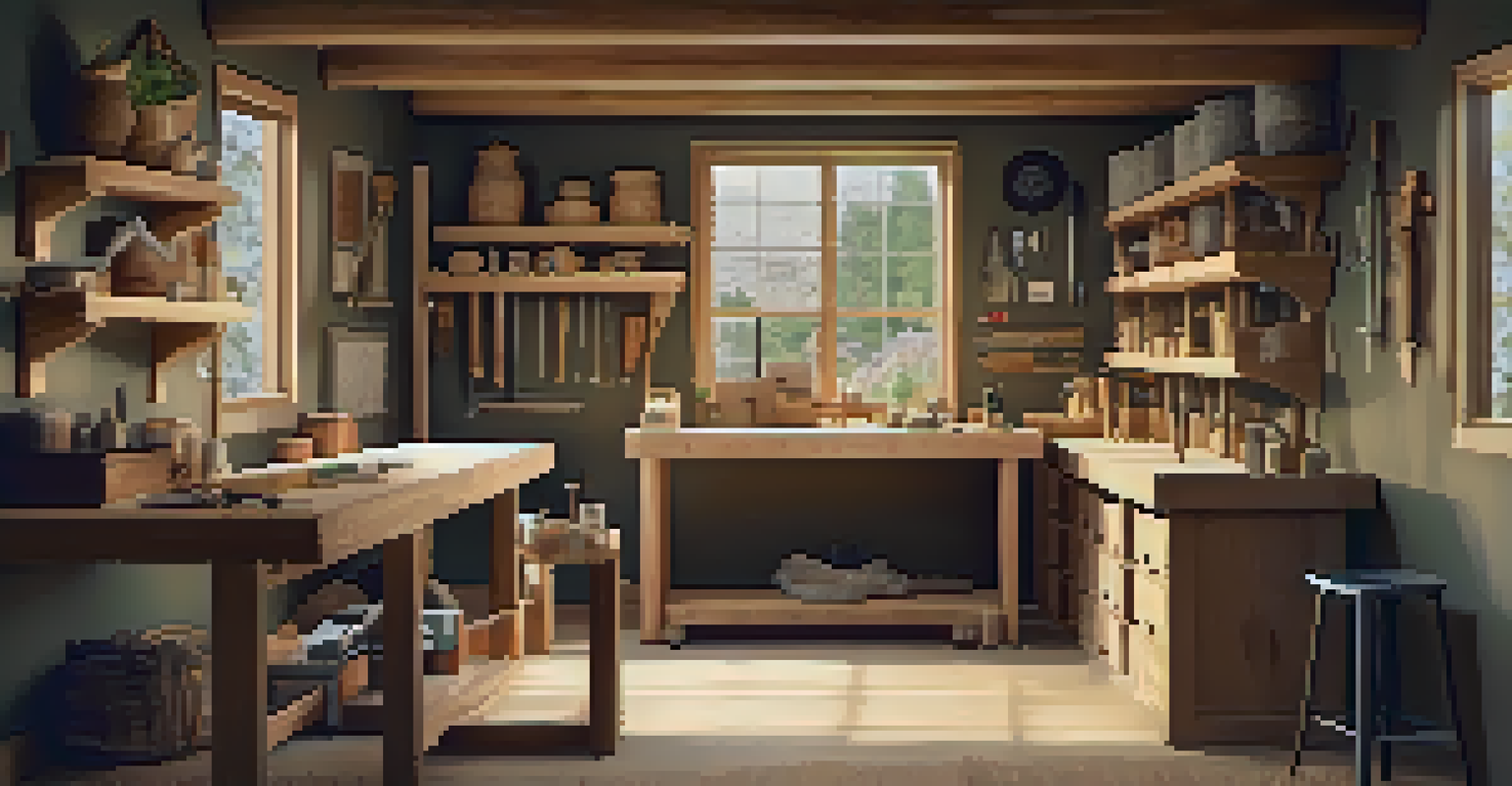Safety Practices for Using Power Tools in Carving

Understanding the Importance of Safety Gear
When it comes to using power tools for carving, safety gear is your first line of defense. Protective equipment like goggles, gloves, and ear protection can prevent serious injuries. Think of them as your superhero outfit, ready to shield you from potential hazards.
Safety isn't just a slogan, it's a way of life.
Goggles protect your eyes from flying debris, while gloves offer a grip and keep your hands safe from sharp edges. Ear protection is essential too; power tools can be surprisingly loud, and prolonged exposure can damage your hearing. Just as a helmet is essential for a cyclist, these items are crucial for a carver.
Always invest in high-quality safety gear and ensure it fits properly. Remember, it only takes a moment for an accident to happen, and wearing the right gear significantly reduces your risk.
Inspecting Your Tools Before Use
Before diving into your carving project, take a moment to inspect your tools. Just like checking the oil in your car before a long trip, ensuring your tools are in good condition is vital for safety. Look for frayed cords, loose parts, or any signs of wear and tear.

A quick inspection can save you from potential accidents caused by malfunctioning equipment. If you notice anything off, it’s best to address it before starting your work. This not only ensures your own safety but also prolongs the life of your tools.
Safety Gear is Essential
Wearing high-quality protective equipment like goggles, gloves, and ear protection can prevent serious injuries while carving.
And don’t forget to keep your workspace organized! A clutter-free area minimizes distractions and helps you focus on the task at hand, making it easier to spot any potential hazards.
Using the Right Tool for the Job
Selecting the right power tool for your specific carving task is crucial. Each tool has its strengths and weaknesses, much like choosing the right shoes for a workout. Using a tool for a purpose it wasn’t designed for can lead to accidents or poor results.
An ounce of prevention is worth a pound of cure.
For example, if you're carving intricate details, a rotary tool may be your best bet, while larger projects might require a jigsaw. Always read the manufacturer's instructions to understand the tool’s capabilities and limitations. This knowledge is essential for both efficiency and safety.
Additionally, consider your skill level when choosing a tool. If you're new to carving, start with simpler tools and gradually move to more complex ones as your skills improve. This approach will help build your confidence while keeping safety at the forefront.
Maintaining a Safe Workspace
Creating a safe workspace is just as important as using the right tools. Think of your workspace as your creative sanctuary; it should inspire safety and productivity. Ensure that your work area is well-lit and free from any tripping hazards, like cords or clutter.
Also, consider the layout of your workspace. Position your tools and materials so they are easy to reach without stretching or twisting your body awkwardly. A well-organized workspace not only boosts efficiency but also minimizes the risk of accidents.
Inspect Tools Before Use
Regularly checking your tools for wear and tear can prevent accidents and prolong their lifespan.
Finally, make sure to have a first aid kit readily available. Accidents can happen despite all precautions, and having supplies on hand can make a world of difference in an emergency.
Power Tool Operation Basics
Before operating any power tool, familiarize yourself with its basic functions and controls. Just like learning to ride a bike, understanding how your tools work is essential for safety. Take the time to read the user manual, as it often contains vital safety tips specific to the tool.
Ensure you know how to turn the tool on and off and how to adjust the speed or settings. This knowledge can help you avoid accidents due to unexpected tool behavior. Practicing proper techniques, such as maintaining a firm grip and keeping both hands on the tool, can also reduce risks.
If you're unsure about using a particular tool, don’t hesitate to seek guidance from someone more experienced. Watching a demonstration or asking for tips can provide valuable insights and build your confidence.
Avoiding Distractions While Carving
Distractions can be a significant risk when using power tools. Imagine trying to carve a detailed piece while someone is chatting away nearby; it can lead to careless mistakes. To maintain focus, consider setting up your workspace in a quiet area where you can concentrate on your craft.
Additionally, avoid multitasking when operating power tools. It’s tempting to check your phone or chat with friends, but this can divert your attention from the task at hand. Just like a chef needs focus to chop vegetables safely, you need undivided attention when working with sharp tools.
Avoid Distractions While Carving
Maintaining focus in a quiet workspace reduces the risk of careless mistakes when using power tools.
Creating a distraction-free environment will not only improve your carving skills but also enhance your overall enjoyment of the process. Remember, safety and creativity go hand in hand.
Knowing When to Seek Help
Recognizing your limits is a critical safety practice when it comes to using power tools. If you feel overwhelmed or unsure about a project, it’s perfectly okay to ask for help. Just like a team of builders relies on each other’s strengths, collaborating can enhance your safety and the quality of your work.
Seek guidance from more experienced carvers or take a class to improve your skills. Having a mentor can provide you with invaluable tips and tricks, making your carving journey more enjoyable and safer. Don’t hesitate to reach out to online communities or local workshops for support.

Remember, safety is a shared responsibility. Encouraging open communication about safety practices with your carving community can foster a culture of care and awareness.